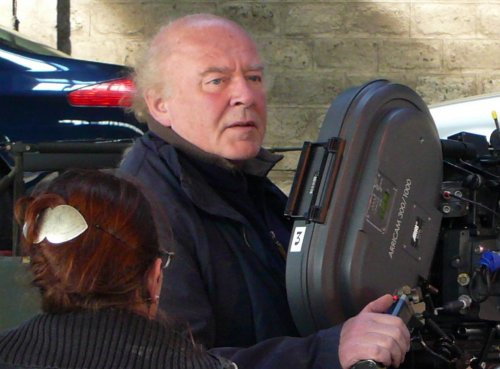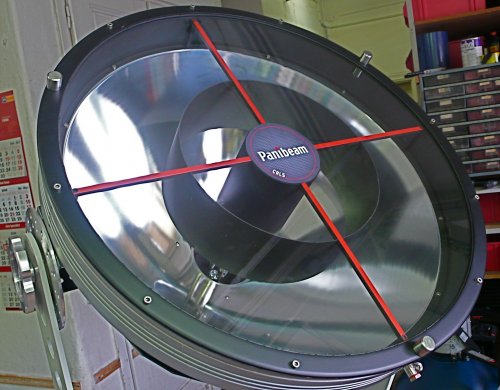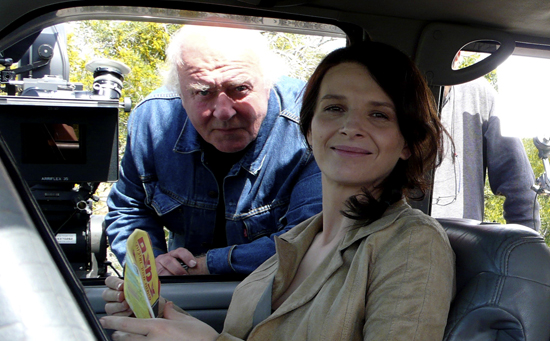The White Ribbon
Interview with cinematographer Christian Berger, AACOn the occasion of the first screenings of The White Ribbon by Michael Haneke, the Palme d’Or winner for the Festival’s 62nd edition, we published an interview with the Austrian cinematographer Christian Berger, AAC, where he discusses his work on the film, and a lighting system that he helped develop.
Christian Berger, AAC has combined career experiences as a producer, director and writer of feature films and documentaries. But he is perhaps best known in France as a cinematographer. Often associated with the Austrian director Michael Haneke (Benny’s Video, 71 Fragments of a Chronology of Chance, The Piano Teacher, Hidden...), he has also worked with Amos Gitai and Luc Bondy.

For the past several films, his work with light has been based on the use of a unique process, which he developed himself the CRLS (Cine Reflect Lighting System). A method based on the use of a reduced number of light sources that are transmitted by a variety of specially designed reflectors. The White Ribbon, Palme d’Or winner of 2009, was entirely shot with this system.
Watching the movie, one can’t help thinking of the films of Bergman... Was this one of your references ?
CB : We never really talked about it... I think that Michael Haneke was even a little scared of it !
But given the subject and the sets, it was difficult to escape the comparison with the images of Sven Nykvist. So I wanted to go to a black and white image with a new beauty, resolutely modern, and avoid at all costs a "retro" look. Our own research led us to period films, including some by Luchino Visconti or Clint Eastwood, featuring oil lamps.
How did you shoot ? The digital projection at Cannes gave the impression of an extremely sharp image with a rich palette of nuances... Is it digital photography ?
CB : Oh no ! The result as it was screened in Cannes, in digital projection, is really a good example of crossing two technologies (film and digital)... At the same time, the movie probably could not have been captured digitally on the set because of very low light levels used in the night interiors. Indeed, Michael Haneke can’t stand overlit sets. He wants to see what he imagines his film to look like on the set...
Shooting with high apertures or with 100 ISO inside would be impossible for him to accept ! Only the extreme latitude of the film would allow us the extreme contrasts of the kerosene lamps in the frame. On the other hand, digital projection and post production were essential to achieve the final very modern black and white image...
Did you shoot with black and white film ?
CB : As the television channels imposed by contract the delivery of a color version of the film, we were forced to shoot this way. At first, we were certainly a little disappointed not to make the film directly in black and white...
But after some testing, I realized that the combination of the new Kodak Vision Color negative (500T, 100T and 250D), with a 4K scan and a black and white DI was exactly what we needed to achieve this kind of modernity. In particular as far as the gray scale is concerned, I think that there is no comparison with the old black and white negative whose technology has not changed for almost 30 years ... Today, you can only get this quality with digital.
There is also a big sequence in the middle of the film of very bright day exteriors in full sun (the harvest festival)... How did you do this long sequence that contrasts somewhat with the interior very dark as you describe ?
CB : For this sequence, I merely modulated the contrast with some reflectors. This kind of situation outside of very contrasting day exteriors is also the strength of shooting with film. This is where the collaboration with the costume designer is paramount. For example, we had to do a lot of tests to decide what fabrics to use, avoiding fabrics with sometimes very fine and complex patterns to reduce moiré effects when transfering to digital.
Tell us about your unique approach lighting system and your CRLS...
CB : My approach is more "philosophical" than technical. It’s more of a new method that a new machine. In fact, I wanted to liberate the set as much as possible of this chronic congestion of stands, fixtures, cables and flags... As a director myself, I suffered very often from it and I know that actors did too. That’s why I decided to fully explore the path of reflected light, which is not revolutionary in itself when you think about it.
Sunlight, which is the main source used since ancient times, is itself constantly reflected in everyday life... To recreate a similar set-up, I had to develop a particular light source (Panibeam) using an HMI bulb that can send a ray of light that is optically pure, with a perfectly straight beam. Something akin to sunlight (whose rays are all parallel coming from infinity) which can used with multiple reflections at our leisure.

What’s new technically is the high efficiency of the light source and the reflectors, which allow for a precise control over the nature of the light, its distribution and the definition of its contrast. By simultaneously developing an entire range of reflector panels (the Paniflectors), we can then redirect the light into the depths of a set without adding sources... It’s a bit like a painter who observes daylight and uses it by redistributing it on the canvas...
What is your favorite scene in terms of image, and which illustrates the use of CLRS ?
CB : One example is the scene where the little boy asks the girl what death is... For this scene, we rebuilt an interior set overlooking the village square (for the view). The scene was quite complex as it is supposed to take place at dusk. I only used one source through the window, with some small reflectors around the camera to very delicately and precisely redistribute the base light on the faces. It’s very subtle, and for me, it’s these kind of situations that make the most of the system.
What wattage do these lights come in ?
CB : There are two models, the RLS 70 and RLS 40, respectively 70 and 40 cm in diameter, equipped with 1 200 and 800 watt bulbs. In fact, it’s mostly the surface of the unit which is important because it determines how many reflectors you can place, and the width of the light beam... The reflectors are very lightweight, very easy to hang and hide without leaving bars or heavy equipment to hang lights.
In addition, adjustment of the lighting is faster and you can shoot with very little energy. For example, on Hidden, I needed only 7Ks... On The White Ribbon, I never exceeded 12Ks ... And the funny thing was that we were always waiting for makeup or costumes rather than the lighting !
Does this method of lighting work well with moving shots ?
CB : On White Ribbon, we had a few very discreet dolly moves and also a few Steadicam shots. But perhaps it’s not the best example. In this regard, I would cite the film by Amos Gitai (Disengagement) where I really had to light 360 degrees, because the director wanted full freedom for his staging and his actors. Since the source (or sources) are often placed outside, and the main light comes through a door or window, you find yourself on a set with very few things that interfere with the frame... Small 10x20, 30x30, 50x50 cm reflectors... very easy to conceal. The lighting is literally built from these secondary sources, diffused or not, creating round, elliptical shapes... There is no need to flag, because there is almost no light loss…

The HMI light spectrum is not always appreciated by some of your colleagues... Do you have a tungsten option for your system ?
CB : Because of the small size of its electric arc, the HMI bulb is the only one that can power such projectors with parallel rays. But one can easily correct its color temperature as we regularly did on The White Ribbon in order to shoot in color as required by our TV contract. In fact, I don’t think there will be a Panibeam equipped with tungsten bulbs in the future, but on the other hand, we will surely bring variations of the 40 cm model with bulbs weaker than 800 watts. Especially for shooting in cramped settings, when the unit can’t be placed outside... However it isn’t necessary to reduce the size of the unit, otherwise you would risk losing too much of the surface to use the reflectors easily.
Tell us a little about post-production.
CB : I now think that the DI is as important in my work as what I do in production. The possibilities are such that one can, for example, compensate for the lack of time or means encountered on set.
On The White Ribbon, I spent two weeks in DI, which is shorter than average, but logical because we were only working in luminance and contrast without the problems of color...
Among the "special" tricks I used on this film, there is for example a ruse for eliminating double shadows under kerosene lamps... Or this tool for modulating the sharpness of the image that allowed me to direct the viewer’s attention to a character by adding or removing a detail in certain scenes shot wide open (like the the priest’s meal with his children)... This DI led to the finalization of the film as a digital print (as presented in Cannes) and as a film print via a film-out on color internegative.
To date, we have not done any color grading, as German television has not yet indicated its final choice of delivery format.
(Interviewed for the AFC by François Reumont – Tranlated from French by Benjamin B)
 En
En Fr
Fr




